Incubating future movements in travel and culture
Words Emily McDermottImages Daniel Lober
Moroccan artist M’Barek Bouhchichi addresses political and historical structures through poetic paintings, sculptures, photographs, and videos. Since moving to Tahanaout, a city just outside Marrakech, three years ago, he has worked closely with local artisans like Akid Abderrahim, who had just opened his own ceramic studio and began to challenge what Bouhchichi thought he knew. A process of unlearning was sparked and Bouhchichi has now come to understand that the separation between the “artist” and the “artisan” is a lasting effect of colonialism. Moreover, he realized that he, as an artist, has a responsibility to the context, history, and people of Morocco. During Further Marrakech: The Artist and the Artisan, we spoke with Bouhchichi—who is also on the committee that selects the artists invited to La Pause Residency—about these themes and the development of Morocco’s art scene.
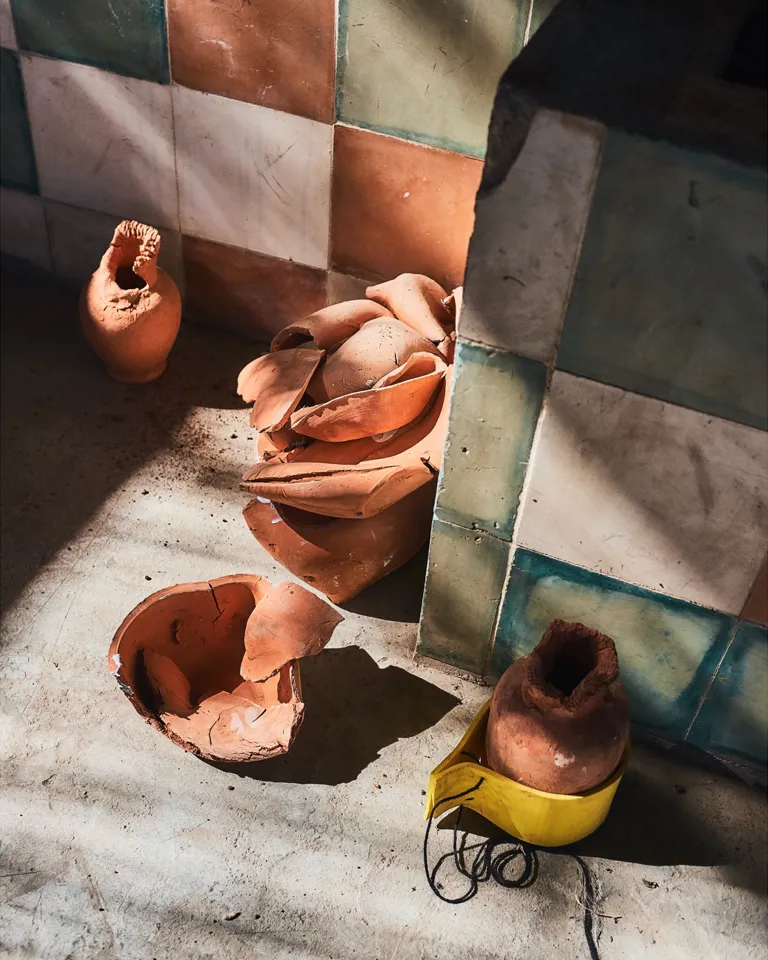
Bouhchichi created work in collaboration with Deborah Fischer, a French artist who was in residence at La Pause.
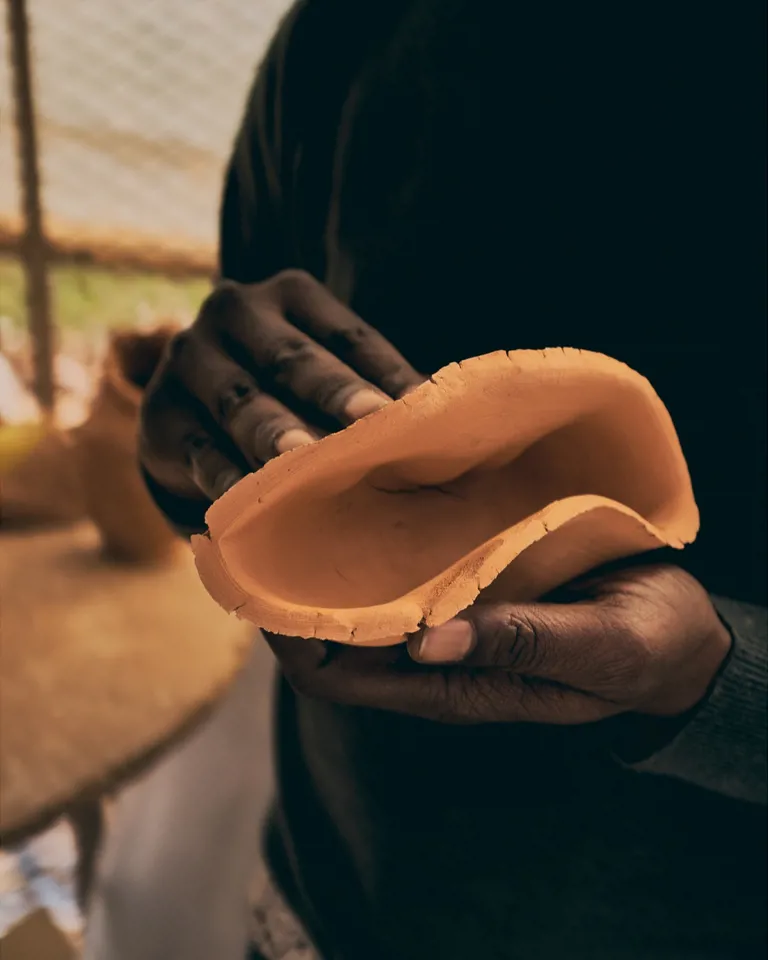
M’Barek Bouhchichi: Throughout history, objects, know-how, and materials traveled like humans, but with territories came the idea of having specializations or industries specific to certain places. So today, objects, know-how, and materials are often contained to specific places. Residencies like La Pause reactivate ancient ways of circulating objects, knowledge, and materials through art.
MB: Growing up I went to a French school, but in the last few years I’ve been going through a process of “unlearning”: I am getting rid of everything the French school taught me, because it taught me a history of art in which my [Moroccan] society and culture didn’t exist. In this process, I’ve thought a lot about things that have always existed but are described as “artisan” or “indigenous” because of colonial history. Colonizers established a hierarchy that put Europe at the center of the world and with that came a distinction between scholarly, or European, art and indigenous, or Moroccan, art. This distinction still exists today and presents us with a specific hierarchy instead of multiple points of view.
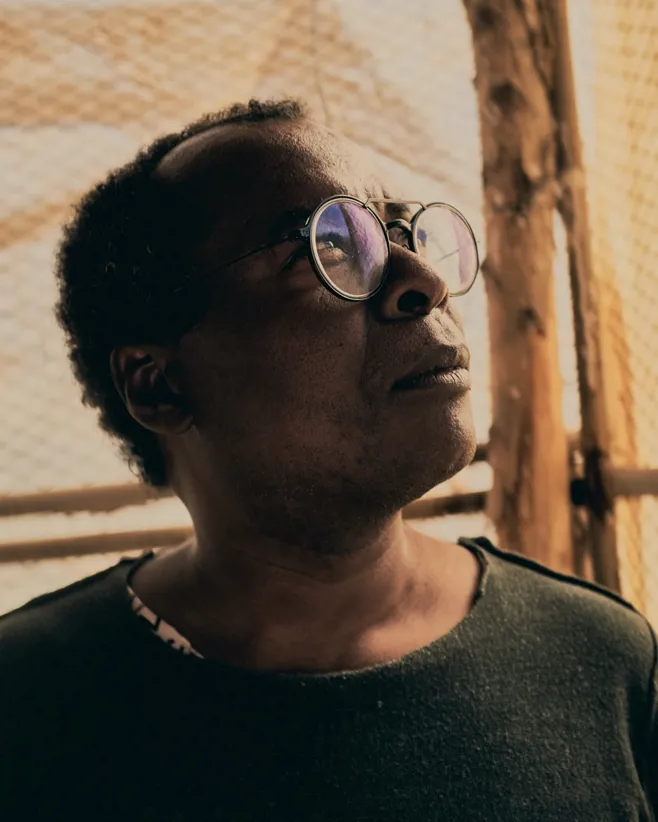
M'Barek Bouhchichi
MB: Today, the artisan is marginalized, although they are the maker. Marrakech serves as a showcase of what artisans are doing but they don’t exist in the showcase. In the Moroccan education system, which is rooted in the Western tradition, we are only encouraged to use our brains. But craftmanship can bring back the idea of making things with one’s hands and brain—to use one’s hands to not only make but also to think. We need to recreate a balance between the two.
In my own practice, when I hear a type of craftsmanship is dying, I often go and look for those artisans. There’s a sense of urgency to go, see, collect, and archive their process. I find this very important because the traditional, Euro-centric archive writes about us, Moroccan people, without giving us the opportunity to write our own history. So, for me, the act of researching, archiving, and documenting what artisans are doing is a way of challenging the authority of the traditional archive.
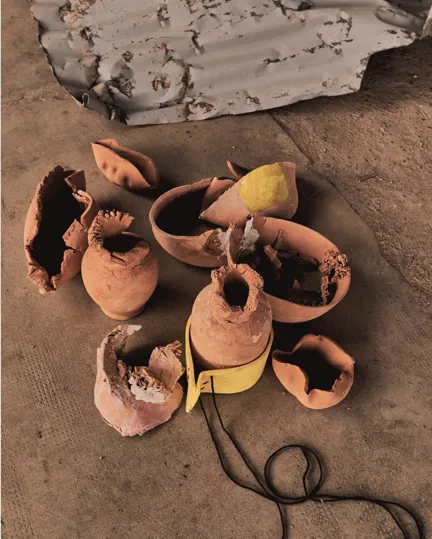
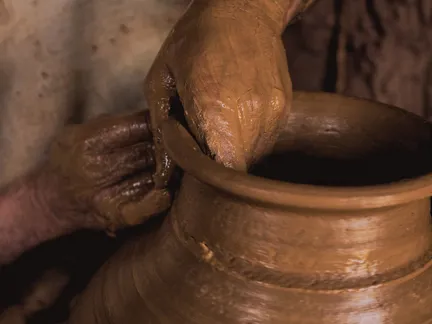
Akid Abderrahim creates all types of ceramic forms in his generations-old studio.
MB: There are important ways of thinking about art beyond artworks, art fairs, galleries, and so on, which impose market codes and values. Collaborations with artisans show you art outside of this sphere. The 1-54 Contemporary African Art Fair, for instance, started in London, then went to the U.S., and then came to the African continent. It is important to question the fair, the role of the artists, and the role of the initiatives that happen around it.
I think art and the artistic activity in Morocco have a responsibility towards the history, towards the context, towards the people. Marrakech has a very interesting context which nests different realities. It’s in the middle of Morocco, it’s multiethnic, multicultural. Visually, there is a mountain with snow but there are also palm trees. There is the medina but also the new town, and traffic flows between the two. There is a side which point towards authenticity and history, and there is a side which points towards modernity and civilization. All of this creates a laboratory that attracts artists.
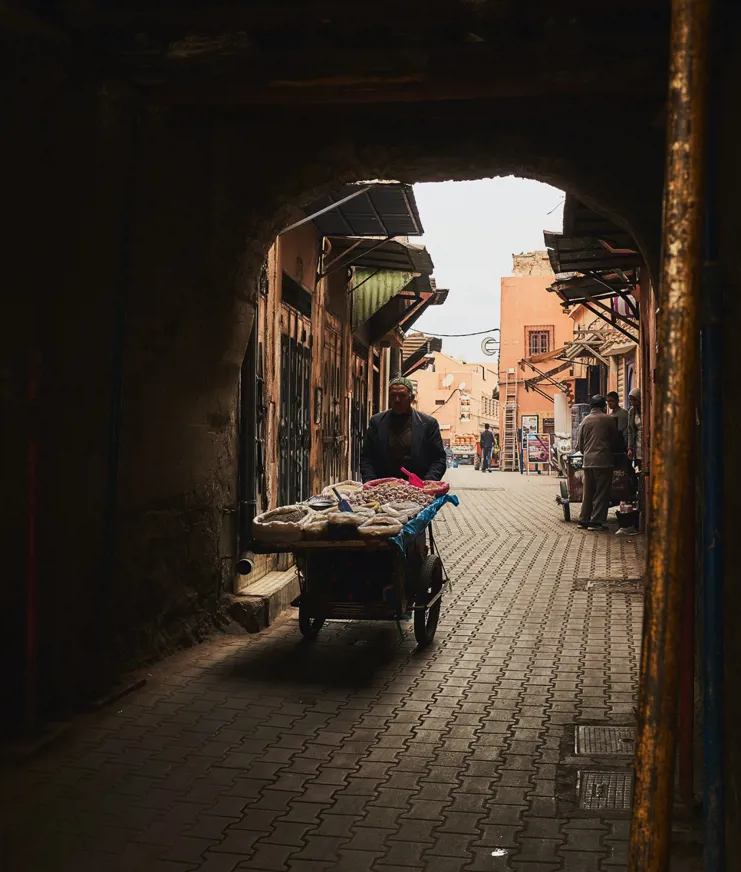
Located on the African continent but also closely connected to Europe and the Middle East, Morocco and the streets of its cities reflect a wide range of cultural influences.
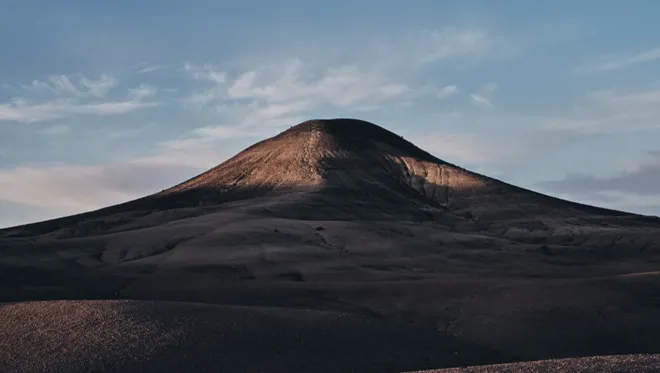
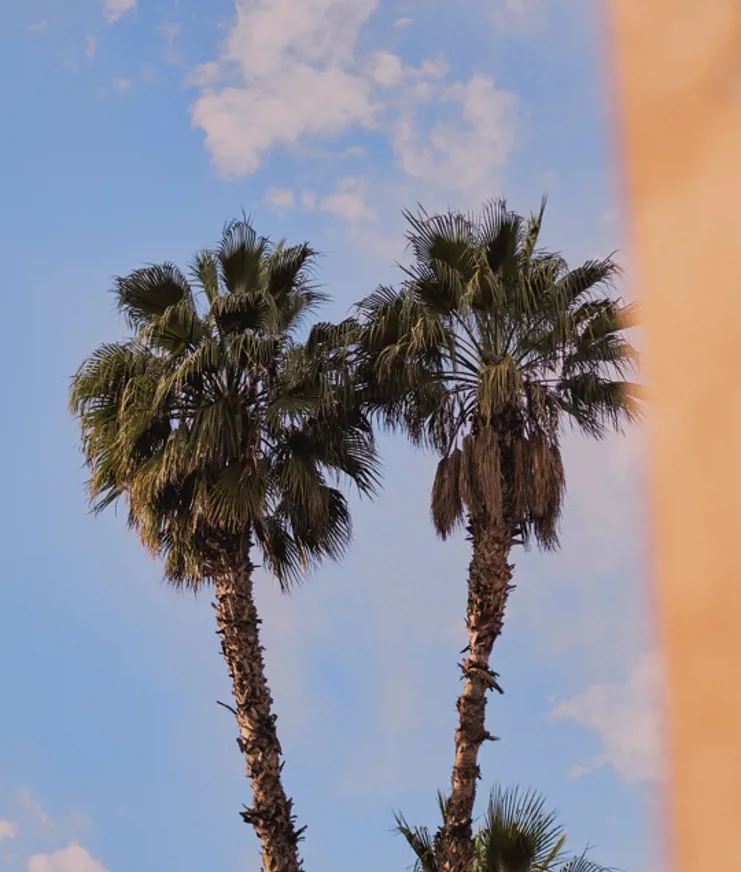
Outside of Marrakech is an unforgettable landscape, with snowy mountains as well as an arid desert.
MB: In general, nonverbal language creates itself as a form of expression in the absence of spoken language, and this is what happens when an artist meets an artisan. There is an exchange where things are created without words. For instance, Deborah [Fischer, one of the artists at the La Pause Residency] and I found ourselves creating art together without even thinking about it. It’s very reassuring to meet someone and understand each other in this way.
MB: There is a kind of schizophrenic situation in Morocco: Sometimes we’re not African, sometimes we’re Arabic, recently we became Berber. We’re in a geographical situation where we ask ourselves about the legitimacy of representing a continent that we don’t know. For example, when we, Moroccan people, see people of color we say they are Africans and we forget that we are African. The history of “Africanness” needs to go past the color of skin—Africa needs to be seen over and over again, and revisited as a larger entity beyond color, ethnicity, or race. Personally, it’s important for me to turn around and look toward the South. When I look in that direction, I see and accept the past. Then I question history and come back to the idea of breaking the cycle to begin again.
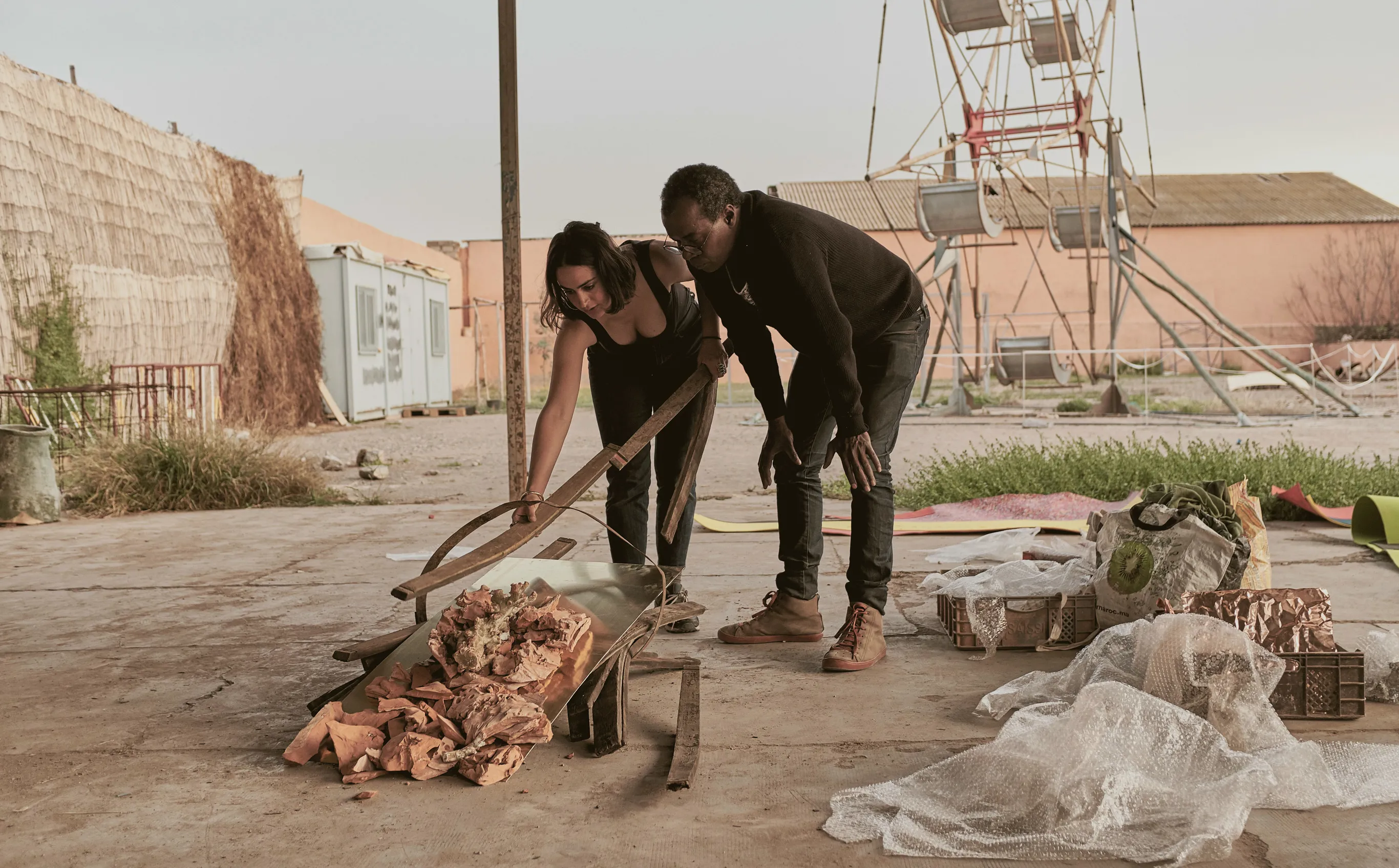
Bouhchichi collaborated with Deborah Fischer, a French artist who was in residence at La Pause.
Further Marrakech
In collaboration with La Pause Residency, Further Marrakech asked what it means to be an artist or an artisan—and what happens when such practitioners come together in the act of creation.
Further Marrakech
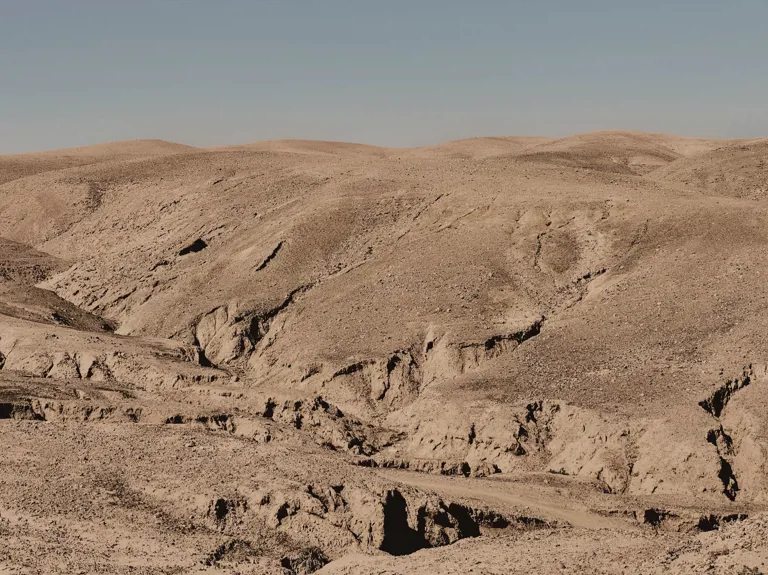
Running in a nearly dried-out riverbed moved Lena Marie Emrich to create glass-plated photographs and bondage-inspired leather sculptures.
Further Marrakech
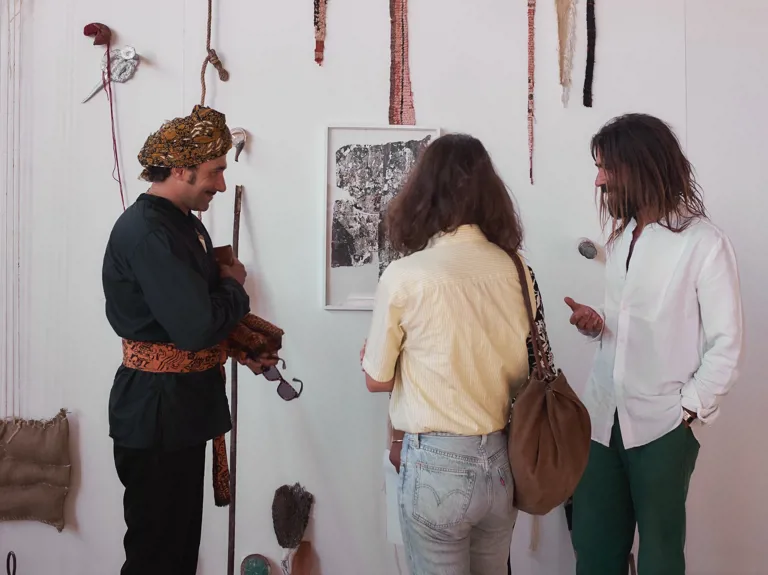
From building hospitals to overseeing large-scale exhibition programming, sharing knowledge is the most important aspect of everything Amine Kabbaj does.
Further Marrakech
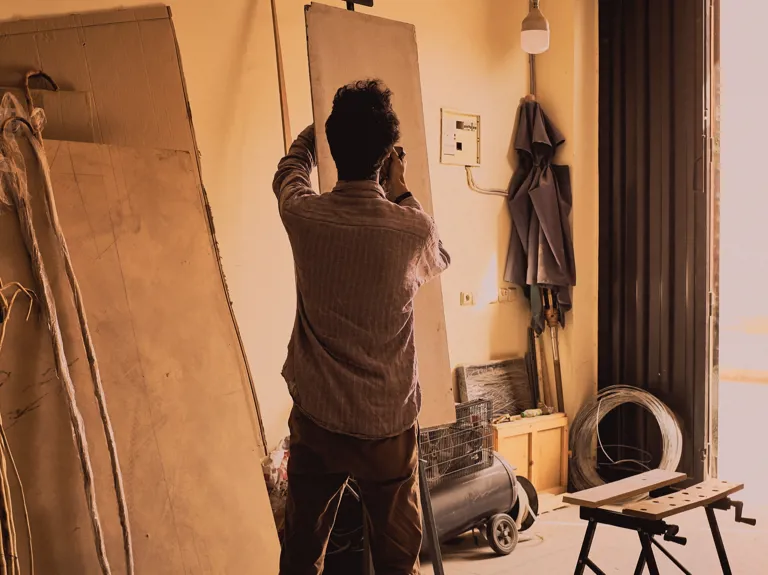
Moroccan artists Loutfi Souidi and Mohamed Arejdal believe the future lies in the local past and the global present, and, more importantly, the connection between the two.